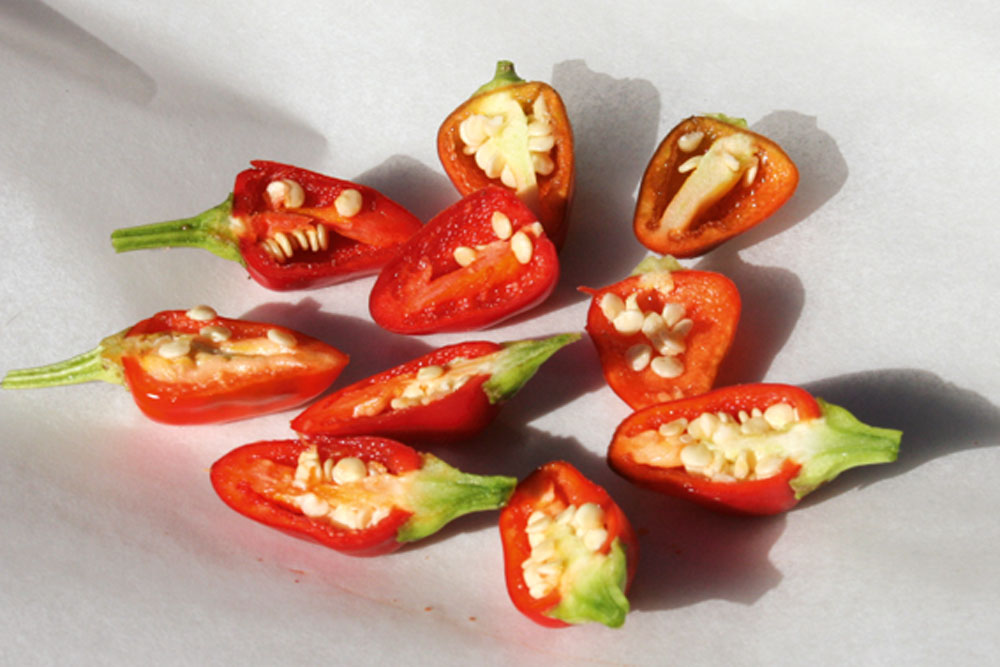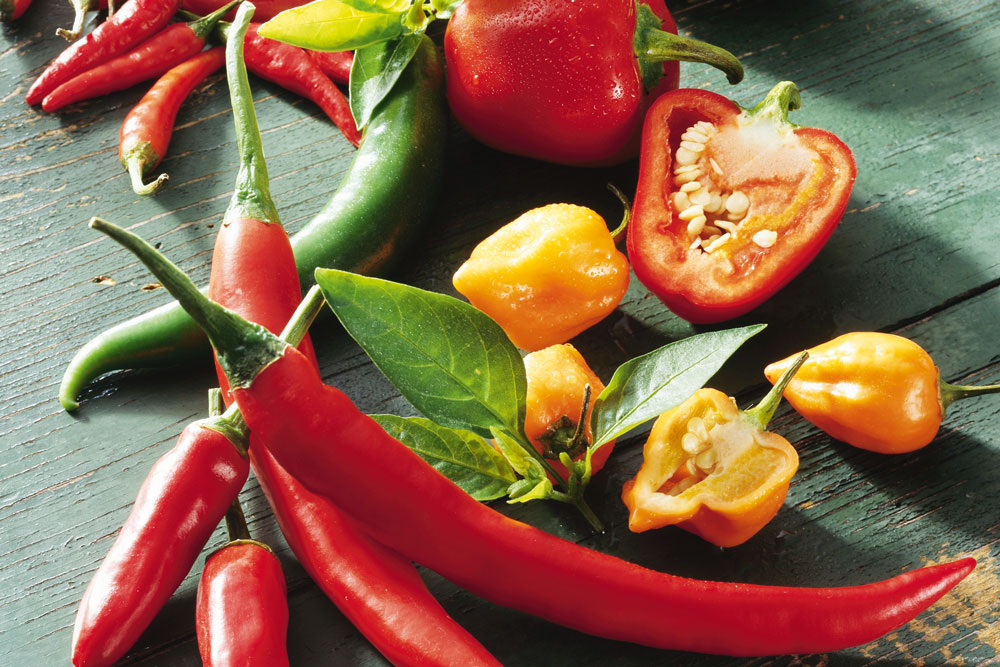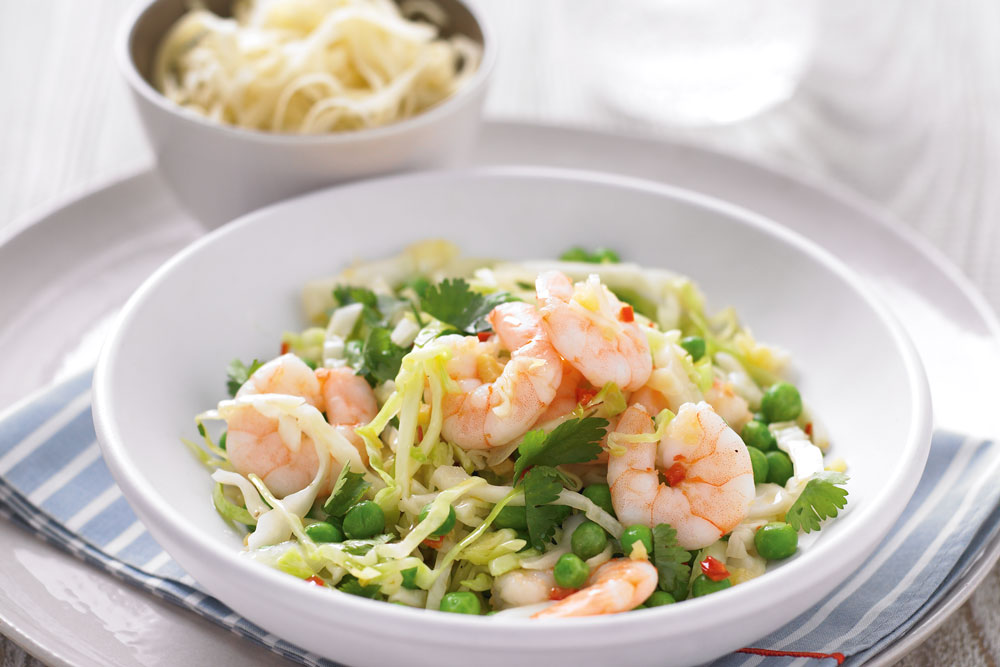
Easy to grow, good for you and boasting a multitude of culinary uses, chillies are a great addition to your diet.
They bring tears to your eyes, make your nose run and burn your mouth, but chillies are still loved by millions of people worldwide.
Chillies belong to the Solanaceae or nightshade family, which also includes potatoes, tomatoes and eggplants.
Native to South America, they have been part of our diet for centuries.
About 6000BC, the inhabitants of Brazil and Peru began eating wild chillies, known as aji. Traces from this period have been found in Peruvian burial sites, so they were cherished enough to be carried into the afterlife.
They’re good for your health, too. As well as being high in vitamin C, eating them in a meal helps control insulin levels, according to research by the University of Tasmania.
Regular consumption of chillies is also reputed to be beneficial for inflammatory diseases, and they have long been used in herbal medicine to stimulate the circulatory and digestive systems.
Handle with care
A chemical in chillies, called capsaicin, gives them their heat and therapeutic value. And the more a chilli contains, the hotter it will be.
Chillies are rated on a heat scale known as the Scoville Scale, which is divided into heat units. It is based on the dilution of ground chillies in sugar water to measure their pungency.
Most of the capsaicin is contained in the seeds and white ribs inside the fruit. Removing both from the chilli will reduce the heat. Capsaicin levels in chillies are affected by the climate and environment, as well as by the cultivar.
Cool weather and too much nitrogen in the soil can slow the production of capsaicin.
TIP Wear gloves or wash your hands after handling chillies, and don’t rub your eyes or other sensitive areas.
Storing chillies
Chillies can be dried and stored or frozen fresh, whole or chopped.
Dry in the sun outdoors or on a windowsill, then cut in half lengthways and place on baking paper. Turn every day until dry. Or thread the stalks on cotton and hang in a well-ventilated, dry spot for at least three weeks.
Store chillies when dried in an airtight container for up to a year.
Freeze fresh chillies in freezer bags for about six months.
 Cut chillies in half and put them on baking paper to dry in the sun
Cut chillies in half and put them on baking paper to dry in the sun
Grow your own
Chillies come from the same wild species as the capsicum, and there are more than 200 varieties of these short-lived perennial plants. In many parts of the world they are known as hot peppers.
Chilli fruit follows white flowers and comes in lots of shapes and sizes. Depending on the variety, they can ripen from green to shades of yellow, orange, brown, purple or red. The more mature a chilli is, the hotter it will be.
These warm-season plants can be grown in tropical and subtropical climates all year round. If you grow your own, you will be rewarded with a bountiful harvest.
The seeds can be sown from August to December in temperate areas and from September to mid-November only in cold climates. They are also available as seedlings from nurseries.
Sow seeds 6mm deep in punnets, gently pricking out the seedlings and transferring them to 100mm pots, giving them a sunny position. Plant them in the garden in a sheltered spot in full sun when they are 150mm high. The soil should be free-draining and enriched with either compost, aged cow manure or Yates Dynamic Lifter before planting.
TIP Chilli seeds can also be sown directly into garden beds.
Mulch around the plants using either lucerne hay or pea straw.
Feed when flowers appear with Yates Dynamic Lifter Plus Fruit Food. Avoid fertilisers high in nitrogen, especially when the plants are young, so there is not too much leaf growth at the expense of fruit.
Decorative and edible, chillies will grow well in pots. Use a premium potting mix, water regularly and give them periodic feeds of a soluble complete fertiliser.
Choose a variety
Hot Habanero
This chilli has small tangerine-coloured bell-shaped fruit.
Caysan
The long green tapered fruit of this plant turn bright red.
Thai
The fruit of this variety change colour through shades of green, cream, purple and red. CHA CHA Eye-catching white fruit tinged with purple mature to orange.
Medium jalapeno
This variety has green medium-sized fruit that mature from purple-black to red.
Jalapeno Mexicana
The green fruit turn purple-black upon maturity.
Anaheim
This variety has thick-fleshed fruit that are ideal for stuffing.
Serrano
Turning from green to red, the fruit of this chilli are thin-skinned.
Mild Seville
A compact variety that produces masses of small fruit that change to orange as they ripen.
Salsa
Perfect for pots, this compact plant has lots of small fruit that turn a brilliant red as they mature.
Hungarian yellow wax
The long fruit of this chilli change from green to yellow and light orange.
Chilli fruits come in different colours and have varying heat levels
In the kitchen
Try these easy ways to use chillies in your everyday meals.
Toss into pasta dishes and stir-fries.
Make chilli oil by warming 500ml of olive oil in a pot. Add 20g of dried red chillies and a couple of whole fresh red chillies, then heat for 3-4 minutes. Decant into a sterilised bottle and seal. Store in a dark, cool spot and use after 3-4 months.
Marinate king prawns in chilli, lime and garlic, then cook on the barbie.
Turn fresh chillies into sambal oelek, an Indonesian chilli paste. Remove the stems, then chop the chillies in a blender. Add a little vinegar and salt, then process until a paste forms. Put in a sterilised jar and keep in the fridge to add to recipes.
Add chillies to your favourite meat, fish or chicken marinade.
Make chilli jam.
Click here to see the recipe for this Chilli and Prawn Pea Stir-Fry



